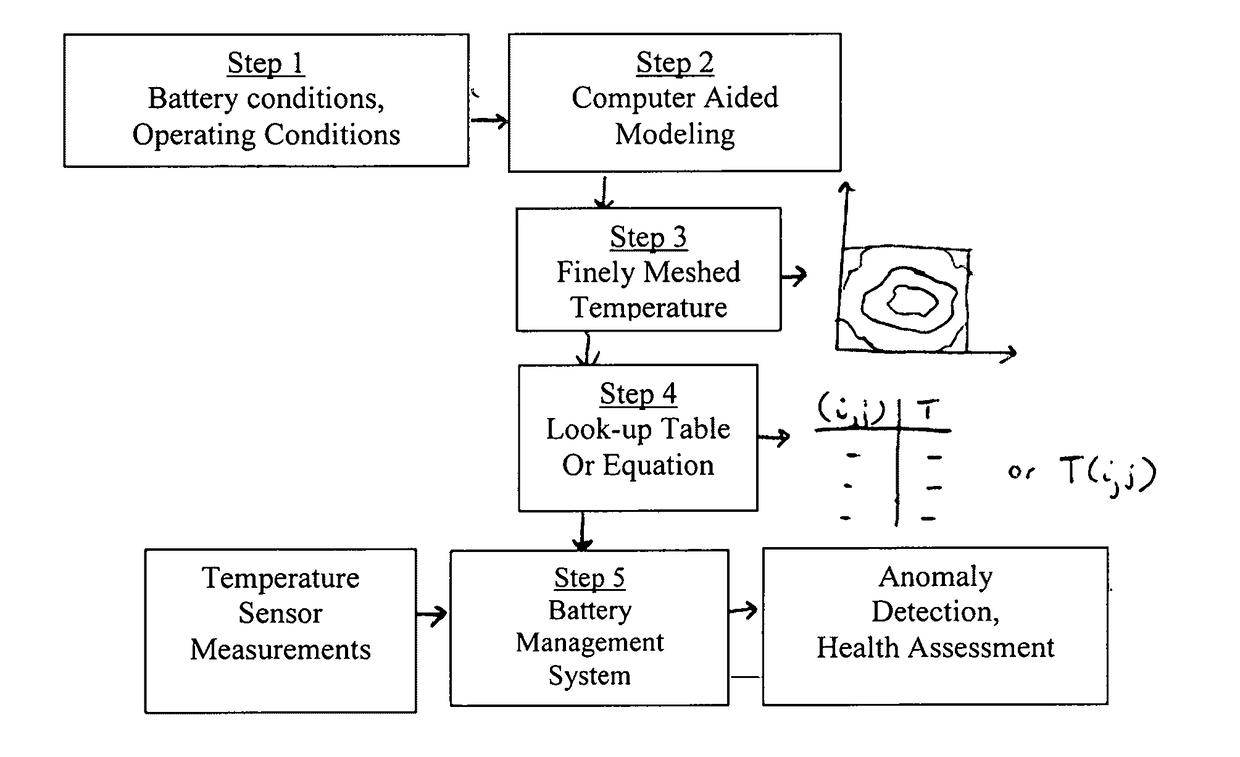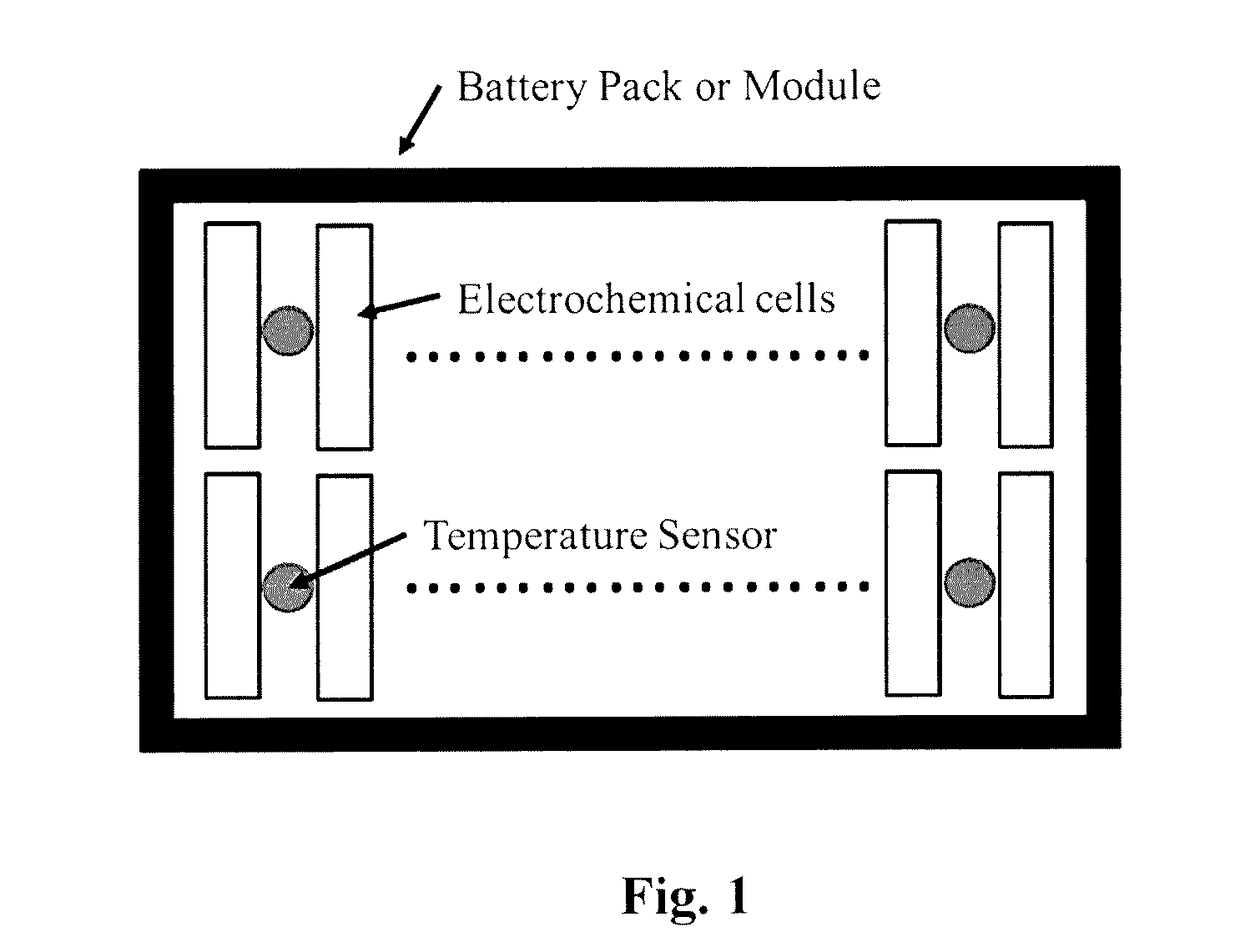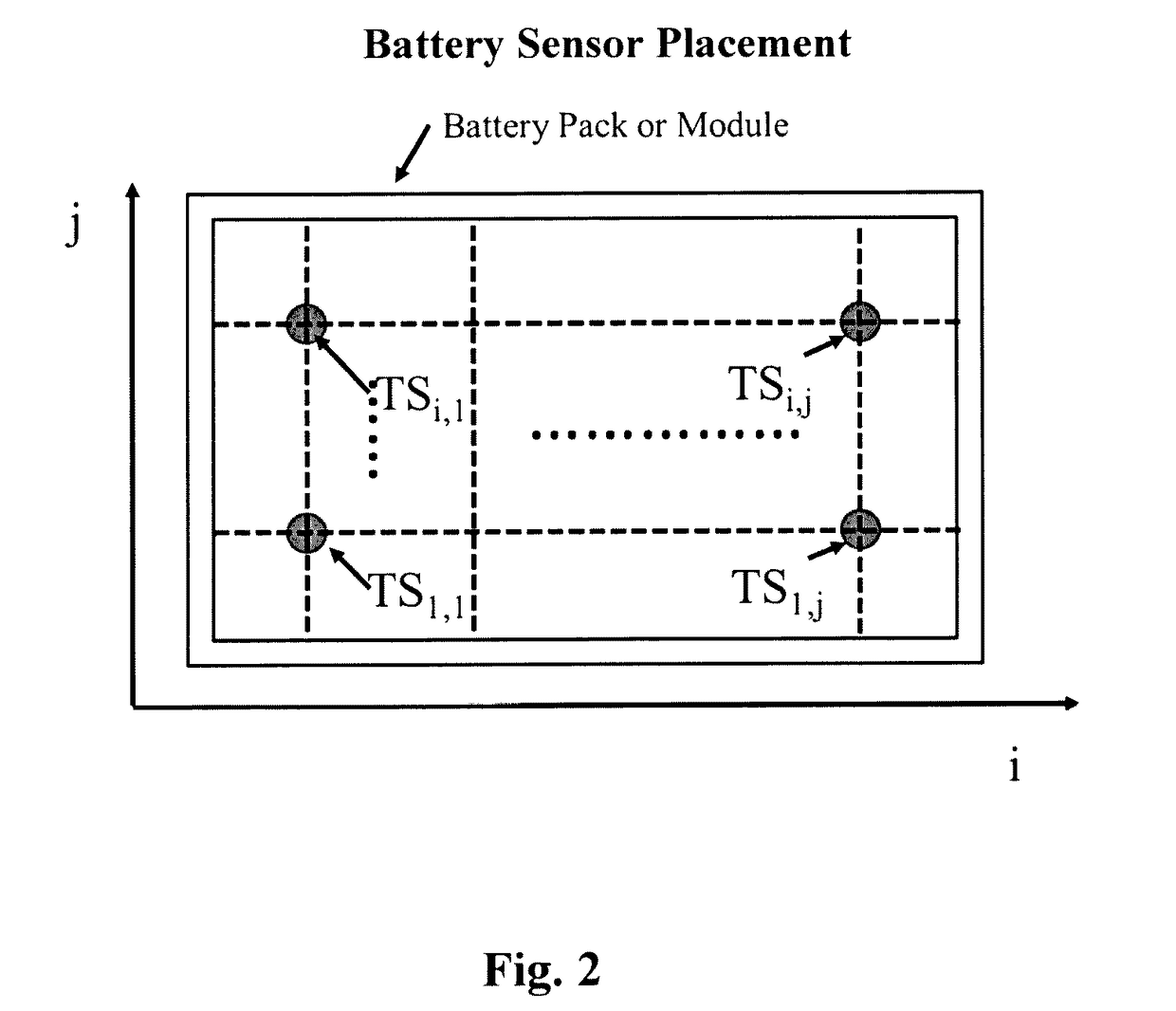Thermal Monitoring of Battery Packs
a battery pack and health monitoring technology, applied in the direction of thermometers, safety/protection circuits, instruments, etc., can solve the problems of safety risk, affecting neighboring cells, and cascading failures
- Summary
- Abstract
- Description
- Claims
- Application Information
AI Technical Summary
Benefits of technology
Problems solved by technology
Method used
Image
Examples
Embodiment Construction
[0023]Temperature monitoring and modeling are not limited to anomaly detection and safety. This same strategy can be used for many purposes including, but not limited to, the design of control strategies, implementation of active thermal management, assessment of the remaining useful life of the battery, or determination of warranty coverage.
[0024]A general example of the embodiments of the invention is described below with reference to the accompanying drawings. The invention is not limited to the construction set forth and may take on many forms embodied as both hardware and / or software. The invention may be embodied as an apparatus, a system, a method, or a computer program. The numbers are used to refer to elements in the drawings.
[0025]A battery pack is composed of at least one or more cells connected in various series and parallel combinations, such as shown in FIGS. 4A and 4B. In some embodiments individual cells are in the form of flat plate-like structures, which can be sta...
PUM
| Property | Measurement | Unit |
|---|---|---|
| temperatures | aaaaa | aaaaa |
| temperature | aaaaa | aaaaa |
| temperatures | aaaaa | aaaaa |
Abstract
Description
Claims
Application Information
 Login to View More
Login to View More - R&D
- Intellectual Property
- Life Sciences
- Materials
- Tech Scout
- Unparalleled Data Quality
- Higher Quality Content
- 60% Fewer Hallucinations
Browse by: Latest US Patents, China's latest patents, Technical Efficacy Thesaurus, Application Domain, Technology Topic, Popular Technical Reports.
© 2025 PatSnap. All rights reserved.Legal|Privacy policy|Modern Slavery Act Transparency Statement|Sitemap|About US| Contact US: help@patsnap.com



